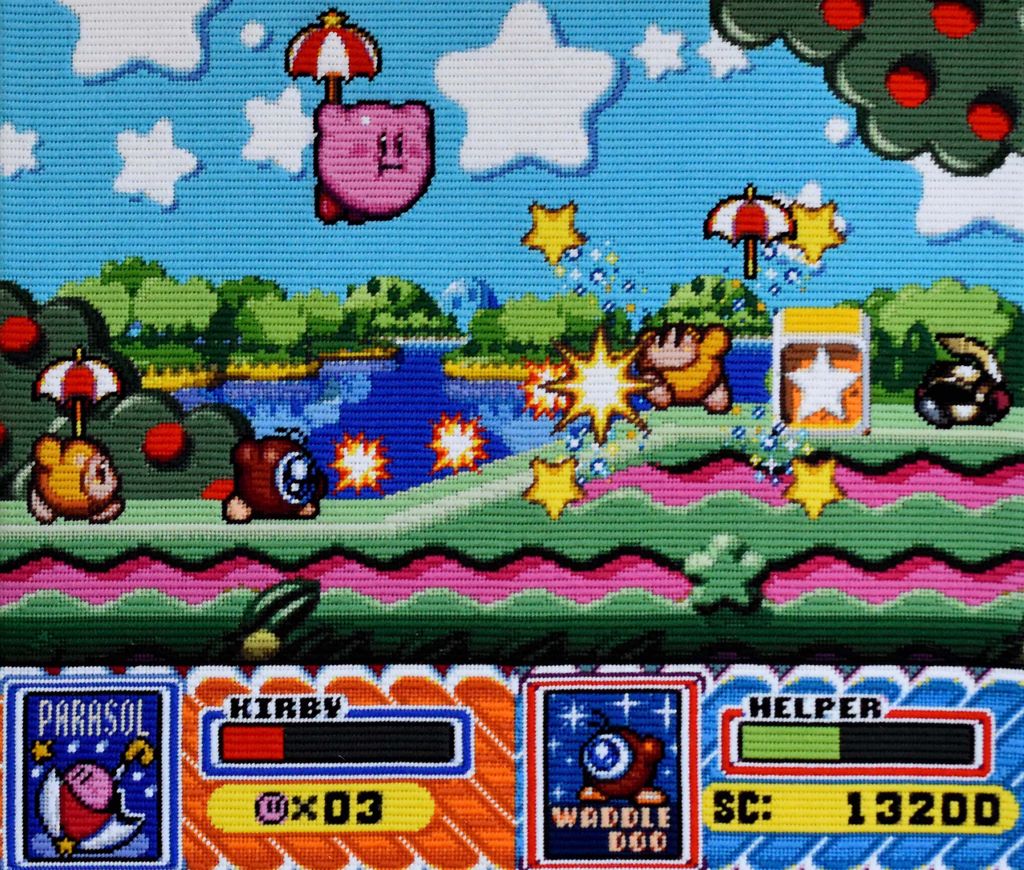Embroidery is a form of creation that is by nature self-contradictory, a medium that gives rise to questions and discussion through its very existence. Its place in history – in art and everyday life – is something on which many, if not most, people have an opinion. Many grew up with a zealous textiles teacher who went on, as one possessed, about the importance of perfection. This perfectionism was particularly manifested on the back of the embroidery – the invisible side that should be crafted just as perfectly as the main motif.
Embroidery has quite a rich history in the visual culture of Western society, and it has been practised by many people from across society’s social strata. As such, then, how come embroidery has tended to fall within the framework of so-called 'women's work'?
In the Middle Ages, it was common, for example, for the church to employ so-called pärlstickare (literally ‘pearl stitchers’), who were highly regarded craftsmen and typically male. It was not until the 16th and 17th centuries that the purpose of embroidery was expanded and it became a tool in the education of girls. With concentration and attention to detail, embroidery was preferable to Society, which was considered potentially risky and which could lead to undesirable or life-altering results. Through the tedious work of meticulously embroidering pious phrases, it was thought possible to impress a kind of calm virtuousness on the girls, thus forming a base for their lives as adults.
When, in the latter 20th century, people begin to consider embroidery to be a waste of female labour, this criticism has to be understood against the background that historically, focus had not been on the joyous act of creation, but on constraint and discipline.
In the 1960s, a discussion within the art world began as to which discipline embroidery should belong – whether it should be jettisoned altogether or if the controversy of its practice could be utilised in creation. Many chose the latter approach, but they were far from the first to do so; even in the early Modernist era, experiments had been performed that combined the structure and form of embroidery with austere Concretism.
However, as a medium of expression – regarding embroidery or otherwise – textiles have always had an outsider status as a concept of art. Sometimes textiles have been included, and other times not. Some have attempted to reshape textiles as 'fibre art', distancing it from the classifying term of textile art. Giving a piece of work made in a certain medium its own epithet, apart from art, insinuates a distinction and assumption that it somehow does not fulfil the criteria to be called art.
Handicrafts with rich histories and lengthy traditions can tend to appear outdated, as if they belong to times past. Ever since the Dadaists' anarchistic chokehold on the concept of art, the central tenets of art have centred more on concept or theoretical design than on the craftsmanship of the creation process. New approaches and contexts will be required for embroidery to survive among contemporary arts.
One such new context includes linking embroidery with digital media. This association is original and yet entirely natural, perhaps primarily so in this connection to retro video games. The construction of images, using well-defined parts (pixels), makes the images easy to translate, especially into cross stitches. As in the case of embroidery, the visual expression in these games is characterised by an aesthetically pleasing repetition.
At least for some younger generations, the retro games are associated with a widespread nostalgia craze. As with madeleines, top hats, vinyl records, and the like they are able to send the player straight into the past. If an individual has had a significant connection with a certain physical item or experience during his or her upbringing – be it music, games, film, etc. – the connection will almost inevitably become part of his or her creative process. For Per Fhager, his embroidery of the games is about catching a feeling and experience; the games that have left a lasting impression for him are the ones that he has translated into embroidery. In his creative process, his interest in the textile handicraft intersects with his love and care for the aesthetics and themes of the world of retro games. When the speed and reproducibility of the digital world meet the slow, meticulous world of handcrafted embroidery, an intellectually pleasing dissonance follows.
Yet another aspect that makes the intersection of digital imagery and embroidery interesting is that it constitutes a meeting point between a practice that is strongly connected to women’s history and a world which has long been explored and created primarily by men. Connecting them is a way to open doors on both sides, so as to invite new practitioners into both worlds.
Using retro games as motifs is also a break from the themes of highbrow culture. These narratives and images, all of which could well belong in a teenager's room – what approach is a museum visitor to take regarding them? Perhaps it is all about daring to part with traditional perspectives on art, daring to cross categorical boundaries, and daring to let oneself be drawn into the magic of a pixelated world filled with fantastic images and thrilling narratives.
Karolina Nilsson, Art historian



